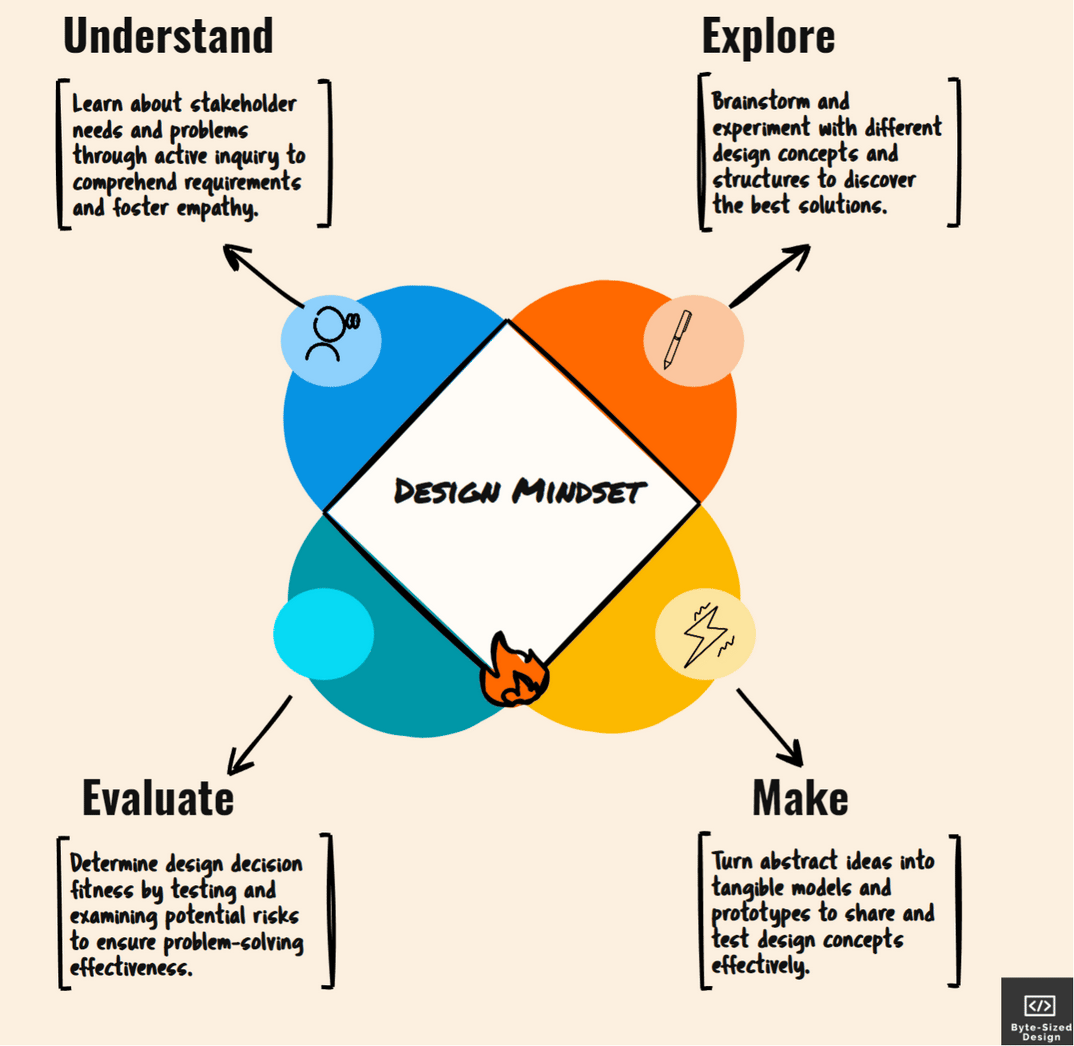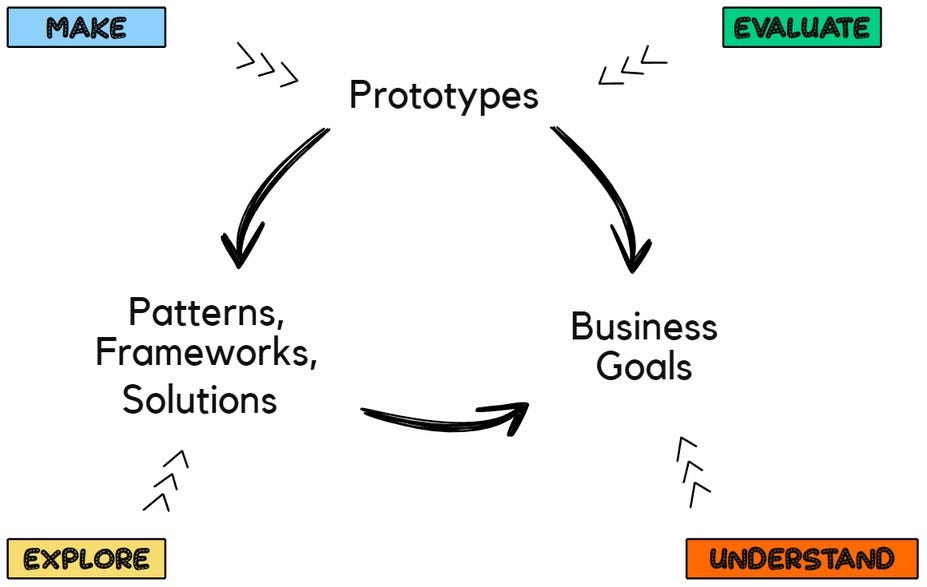The Design Mindsets Every Engineer Should Know And Use
Building Systems with Clarity and Purpose
A design mindset is a key guide in any software engineer’s career especially when building complex of systems. Adopting the right mindset will help you focus on what matters most while staying adaptable in the face of change.
Unlike a rigid process, the right system design mindset allows you to shift perspectives and approaches depending on the problem at hand. There are four key system design mindsets to shape an effective system architecture:
1. Understand the Problem
Every great system starts with clarity. Before jumping into solutions, take the time to define the problem in detail. This is about more than gathering requirements; it’s about listening, asking questions, and uncovering what truly matters to stakeholders.
In the Understand mindset, you focus on:
Stakeholder needs: What do they care about most?
Business goals: What outcomes will define success?
Trade-offs: What constraints will shape the solution?
Example: Imagine you’re tasked with improving system performance. Instead of immediately optimizing code, you meet with users and stakeholders to clarify what “better performance” means—faster load times? Fewer delays? Understanding these specifics sets the foundation for meaningful design decisions.
2. Explore Ideas
Once you know the problem, the next step is to generate solutions. The Explore mindset encourages creativity and experimentation. It’s not about finding the perfect solution on your first try; it’s about testing ideas to discover the best fit for your system’s needs.
In this mindset, you:
Generate multiple ideas: Don’t stop at the obvious solutions.
Test concepts: Compare patterns, structures, and technologies.
Weigh trade-offs: Every approach has strengths and weaknesses.
Example: When designing for scalability, you might test ideas like horizontal scaling, database sharding, or caching layers. Each solution has pros and cons, and exploring alternatives helps you find the right balance for your system.
3. Make It Real
Ideas are powerful, but only when they’re shared. The Make mindset is about turning concepts into something tangible. Whether it’s a prototype, a diagram, or a quick implementation, making things real clarifies your vision and invites collaboration.
In this mindset, you:
Build prototypes: These don’t have to be polished—they just need to communicate key ideas.
Create diagrams or models: Visualizing the architecture helps align the team.
Share and refine: Use your artifacts to gather feedback and improve.
Example: Say you’re proposing a new API structure. Instead of just describing it, you sketch out a flow diagram or build a lightweight prototype to show how requests are handled. This makes your ideas easier to understand and critique.
4. Evaluate Fit
The final mindset ensures that what you’ve built actually works. The Evaluate mindset focuses on testing and validation, helping you refine your design and uncover potential issues before they become major problems.
In this mindset, you:
Test assumptions: Does your design solve the problem as expected?
Assess risks: What could go wrong, and how can you mitigate it?
Refine your design: Use feedback to adjust and improve.
Example: After implementing a new load balancing solution, you run stress tests to simulate peak traffic. These tests reveal that your initial configuration struggles under certain conditions, prompting you to tweak the design and improve performance.
The Think-Do-Check Loop
These mindsets are part of an iterative process that keeps your design adaptable.
Think: Define what you need to learn or test.
Do: Create something tangible to test your ideas.
Check: Evaluate the results and decide your next move.
This loop can last minutes or days, depending on the complexity of the challenge. The key is to keep moving forward, using each iteration to refine your understanding and approach.
Why It Matters
Adopting a design mindset transforms how you approach system architecture. It helps you focus on the problem, generate creative solutions, and ensure your designs hold up under real-world conditions. More importantly, it builds systems that aren’t just functional—they’re resilient, scalable, and ready to evolve.
Next time you’re faced with a design challenge, ask yourself:
Have I truly understood the problem?
What other solutions could I explore?
How can I make my ideas clearer?
Have I tested this enough to feel confident?
By cycling through these mindsets, you’ll not only build better systems—you’ll become a more thoughtful, adaptable engineer.
Adopt Design Mindsets in Any Order
Think of the four design mindsets—Understand, Explore, Make, and Evaluate—as toolboxes, each filled with tools tailored for specific types of design challenges. The beauty of these mindsets is their flexibility; you can switch between them as needed to address risks, uncover insights, or refine your approach.
During any design discussion or workshop, you might cycle through these mindsets multiple times. For instance, you could start by understanding a problem, shift to exploring ideas, then make a prototype to visualize your solution, and finally evaluate it for feasibility—all within a single conversation.
Experienced architects often switch between these perspectives intuitively, but being mindful of the mindsets can help anyone break out of a rut. If you’re stuck, ask yourself: Am I using the right mindset for this problem? Switching gears to a different mindset might provide the clarity you need.
This awareness is a powerful tool. It lets you approach architecture with agility, ensuring you’re always focused on what will move the design forward.
Exclusive Templates for Paid Subscribers To Make Things Easier
Paid subscribers get access to exclusive templates and resources designed to make your system design process smoother and more effective. These templates are practical, easy to use, and straight from Senior FAANG engineers tailored to help you document your designs effectively and drive valuable meetings.
High-Level Design (HLD) Template
Low-Level Design (LLD) Template
Strategic Technical Vision Doc
Project 1-Pager
API Schema Review Doc
Keep reading with a 7-day free trial
Subscribe to Byte-Sized Design to keep reading this post and get 7 days of free access to the full post archives.



